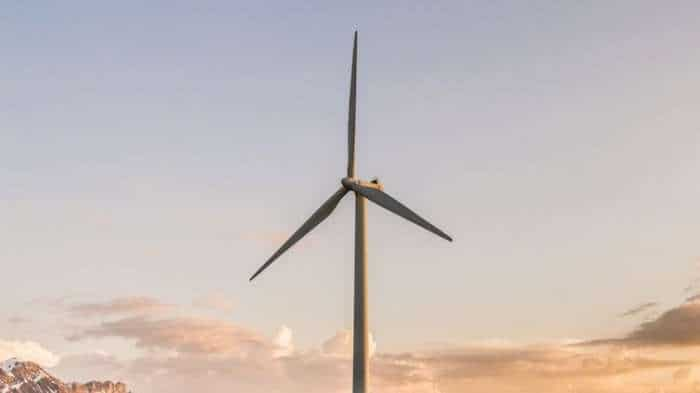NASA probe detects several 'marsquakes' on Red Planet
NASA`s InSight lander has detected several "marsquakes" on the Red Planet, probe has found more than 450 seismic signals to date, the vast majority of which are probably quakes.

Dedicated to look deep beneath the Martian surface, NASA`s InSight lander has detected several "marsquakes" on the Red Planet, meaning Mars trembles more often, but also more mildly, than expected.
The probe has found more than 450 seismic signals to date, the vast majority of which are probably quakes. The largest quake was about magnitude 4.0 in size -- not quite large enough to travel down below the crust into the planet`s lower mantle and core.
See Zee Business live streaming below:
Those are "the juiciest parts of the apple" when it comes to studying the planet`s inner structure, said Bruce Banerdt, InSight principal investigator at JPL.
The initial results of the mission, published in the journals Nature Geoscience and Nature Communications, reveal a planet alive with quakes, dust devils and strange magnetic pulses.
Among the mission`s science tools are a seismometer for detecting quakes, sensors for gauging wind and air pressure, a magnetometer, and a heat flow probe designed to take the planet`s temperature.
"Seismic waves are affected by the materials they move through, giving scientists a way to study the composition of the planet`s inner structure. Mars can help the team better understand how all rocky planets, including Earth, first formed," said NASA.
It took months after InSight`s landing in November 2018 before they recorded the first seismic event.
By the end of 2019, SEIS was detecting about two seismic signals a day, suggesting that InSight just happened to touch down at a particularly quiet time.
Scientists still have their fingers crossed for "the Big One".
Mars doesn`t have tectonic plates like Earth, but it does have volcanically active regions that can cause rumbles.
"It`s just about the youngest tectonic feature on the planet," said planetary geologist Matt Golombek of JPL. "The fact that we`re seeing evidence of shaking in this region isn`t a surprise, but it`s very cool."
Billions of years ago, Mars had a magnetic field. It is no longer present, but it left ghosts behind, magnetizing ancient rocks that are now between 200 feet (61 metres) to several kilometres below ground.
Despite all that activity and frequent imaging, InSight`s cameras were yet to see dust devils.
InSight measures wind speed, direction and air pressure nearly continuously, offering more data than previous landed missions. The spacecraft`s weather sensors have detected thousands of passing whirlwinds, which are called dust devils when they pick up grit and become visible.
"This site has more whirlwinds than any other place we`ve landed on Mars while carrying weather sensors," said Aymeric Spiga, an atmospheric scientist at Sorbonne University in Paris.
"This first year of data is just a start. Watching over a full Martian year (two Earth years) will give scientists a much better idea of the size and speed of the planet`s wobble," said the US space agency.
Get Latest Business News, Stock Market Updates and Videos; Check your tax outgo through Income Tax Calculator and save money through our Personal Finance coverage. Check Business Breaking News Live on Zee Business Twitter and Facebook. Subscribe on YouTube.
RECOMMENDED STORIES

Power of Compounding: How soon will monthly SIP of Rs 6,000, Rs 8,000, and Rs 10,000 reach Rs 5 crore corpus target?

SBI Guaranteed Return Scheme: Know how much maturity amount you will get on Rs 2 lakh, 2.5 lakh, 3 lakh, 3.5 lakh and Rs 4 lakh investments under Amrit Vrishti FD scheme

SBI Senior Citizen FD Rate: Here's what State Bank of India giving on 1-year, 3-year, 5-year fixed deposits currently

SBI Senior Citizen Latest FD Rates: What senior citizens can get on Rs 7 lakh, Rs 14 lakh, and Rs 21 lakh investments in Amrit Vrishti, 1-, 3-, and 5-year fixed deposits
12:47 PM IST









 Elon Musk aims to build Starships akin to Noah's Ark to transport life to Mars
Elon Musk aims to build Starships akin to Noah's Ark to transport life to Mars In historic first, UAE launches first space mission to Mars
In historic first, UAE launches first space mission to Mars SpaceX and Tesla CEO Elon Musk to send Cybertruck to Mars?
SpaceX and Tesla CEO Elon Musk to send Cybertruck to Mars? Photos show evidence of life on Mars, claims scientist
Photos show evidence of life on Mars, claims scientist Space travel may cause long-term change to DNA, says NASA
Space travel may cause long-term change to DNA, says NASA